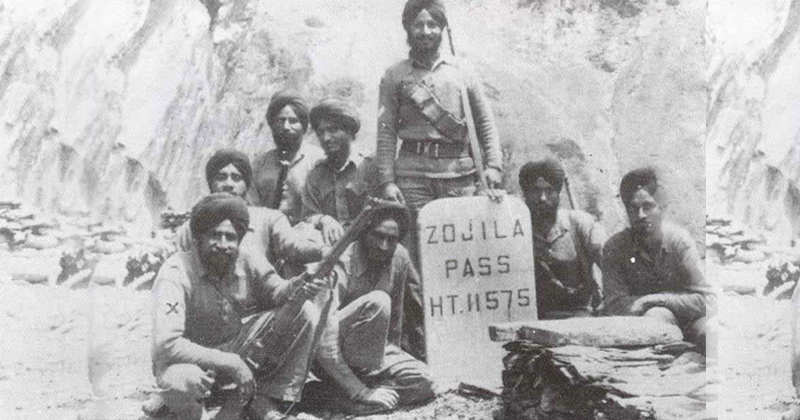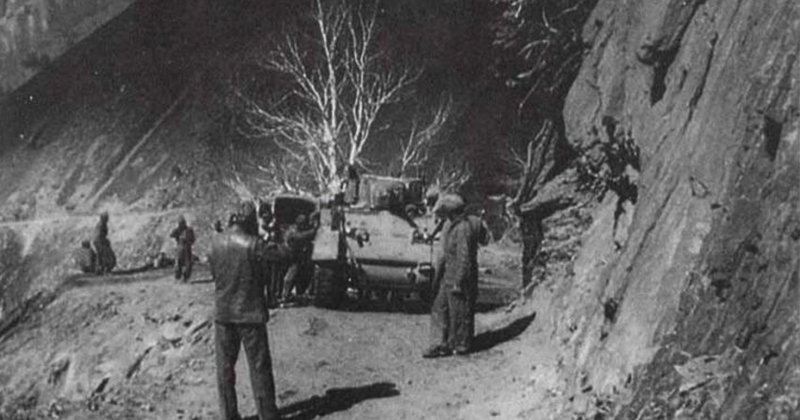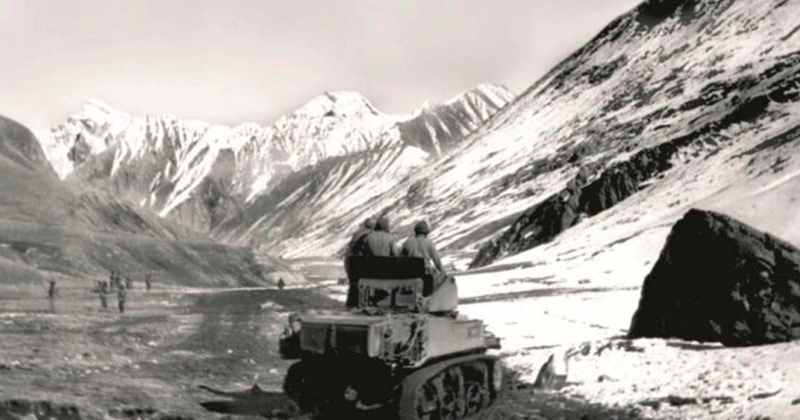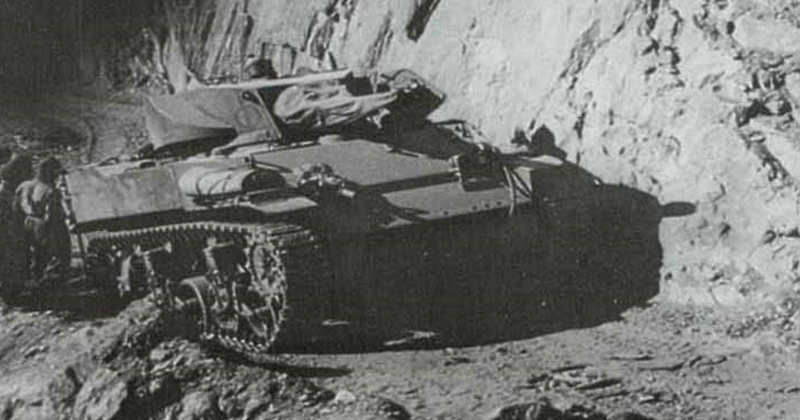November 1, 1948: Battle of Zojila and how Ladakh was saved during Indo-Pak war of 1947-48
Total Views |

The recapture of Zojila Pass on 1 November 1948 holds historical significance as it marked a crucial moment in the war between India and Pakistan which began in October 1947. Zojila Pass is a high mountain pass in the western Himalayas that connects the Kashmir Valley with Ladakh. It holds strategic importance due to its location.
In October 1947, tribal militias, supported by Pakistan, had invaded the princely state of Jammu and Kashmir, which was still undecided about whether to join India or Pakistan. The Indian government, in response, dispatched troops to help defend the state. The recapture of Zojila Pass was a crucial part of these operations.
Strategic importance of Zojila Pass
Zojila Pass, located in the western Himalayas, serves as a crucial gateway that connects the Kashmir Valley with Ladakh. Its control was vital for the movement of troops and supplies between Srinagar (in the Kashmir Valley) and Leh (in Ladakh). Indian forces recognized the significance of Zojila Pass as a lifeline for the region and a potential point of vulnerability.
In May 1948, Zojila fell to the Pakistani raiders and it was vital for India that the pass be recaptured before winter so as to relieve Leh. Operation Bison was launched to wrest control of Zoji La Pass. Stuart Mk-V light tanks of 7 CAVALRY were moved in a dismantled condition through Srinagar to Baltal.
Operation Bison
The plan for the crucial attack—named 'Operation Sparrow' later superseded by 'Operation Bison'—was issued by Brig Atal on 14 October. He had under his command 5 Mahratta, 1/5 RGR, 1 Patiala, and 4 Rajput in place of 3 Jat which was busy elsewhere. The artillery units taking part were 30 Field Battery, 51 (Para) Field Battery and the Jammu and Kashmir Mountain Battery. 7 Cavalry under Lt-Col Rajindar Singh (popularly known as "Sparrow") was the armoured force, with twelve covered carriers also provided. The tanks were to advance through the Zoji La and deal with the formidable enemy positions on Mukand, Chabutra, MMG ridge and North Hill.

Tanks enroute to Zojila in 1948
A coy of 1 Patiala was to follow them in covered carners to Gumn area. 1/5 RGR, supported by 30 Field Battery, 51 (Para) Field Battery and Jammu and Kashmir Mountain Battery, was to mop up and capture Mukand from its lower slopes to the other end at 'small U', after the tanks had reached Gumn and destroyed the main enemy positions. 1Patiala (less one coy) was given orders to assault and occupy MMG ridge beyond Mukand. A few platoons of 5 Mahratta were told to occupy high ground near Chabutra and overlooking the Bod Gumbur Nar before D day, thus preventing the hostiles on Chabutra from launching a counter-attack while Mukand and MMG ridge were being captured. After they were captured, 4 Rajput was to be pushed forward towards Machhol, and the operation was to be continued till the recapture of Drass. Tempests of the RIAF were to give the fullest support to the attack. All details of the crucial operation were carefully worked out, and instructions were issued even about the use of smoke shells in the attack and the regulation of civilian traffic in the Sind valley.
The attack was to begin on 20 October and all arrangements were completed in time. But on 18 October, it started snowing. Heavy snowfall continued on 19 October and 20 October, burying the newly built track, reducing visibility and making all movement over the steep slopes practically impossible. So the projected attack was postponed to 25 October. But it snowed again on 23 October, necessitating a postponement of the attack to 29 October. It proved impossible to begin the offensive even on 29 October, as the snow was still thawing and the tracks and hill-sides were too slippery for movement. Finally, 1 November was fixed as the D day. It was very doubtful now if Kargil or even Drass could be captured before the great freeze-up, and Brigadier Atal was clearly told that if it could not begin on 1 November, the great attack would be finally abandoned.
 Stuart Light Tank during battle at Zojila
Stuart Light Tank during battle at Zojila The dawn of 1 November broke with heavy grey clouds scudding overhead. A chill wind came screaming down the mountains and a fitful drizzle and light snow was falling. The troops were ready and tense, with that peculiar empty feeling in the stomach which even veterans have just before a battle. The attack was to be heralded by a terrific bombardment of the defile at 1000 hours. The snowing continued, and no guns roared even after 1000 hours. Many began to think in despair that the attack had been abandoned, and the fate of Leh was sealed. The tension and uncertainty were becoming unbearable when, at 1030 hours, the artillery barrage began. The tanks of C squadron, 7 Cavalry, clattered forward soon after, led by a 15 cwt Dodge with a winch to pull out any tank that stalled or got stuck An artillery observer (F O O.) went forward in one of the tanks to direct the artillery fire at the exact targets. The two armoured car troops of A squadron, 7 Cavalry, followed the tanks at the tail of the column, and one coy of 1 Patiala in covered carriers gave close protection. Fortunately, no anti-tank mines were encountered, nor did any tank get stuck in the soft snow The streams of bullets from the raiders' MMGs and rifles came furiously, but flattened themselves on the tempered steel of the tanks' sides, and fell harmlessly to the ground Most of the hostiles had never seen tanks in action before, and were completely demoralised by the iron monsters coming close and blasting their bunkers into smithereens The violent fury of the shelling added to their terror Their casualties were very heavy, and the survivors left their positions and fled in utter panic.

Tanks at Zojila Gumri in 1947
The tanks reached Gumri plain by the afternoon. In view of the unexpected enemy collapse, 1/5 RGR was ordered not to wait for nightfall but to attack immediately and occupy Mukand, Chabutra, North Hill and MMG ridge. These frowning hills, which had proved so formidable in earlier attacks, fell now after insignificant resistance. By 2115 hours on 1 November, 1 Patiala also reached Gumri, the flanking hills were firmly held and, at long last, the Zoji La defile had been burst open.

